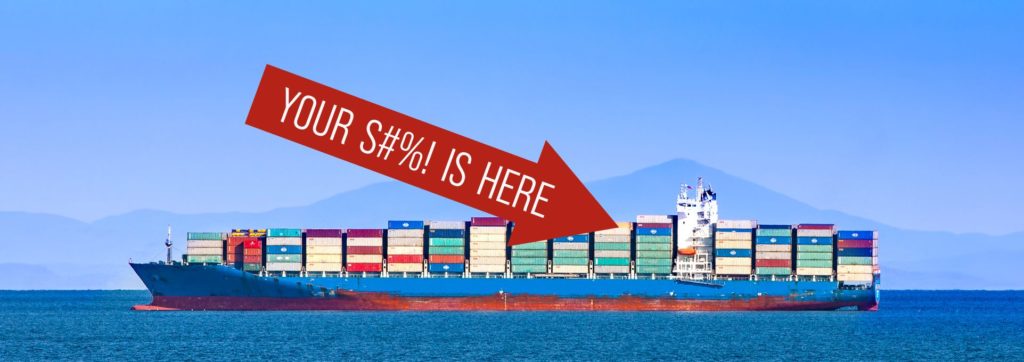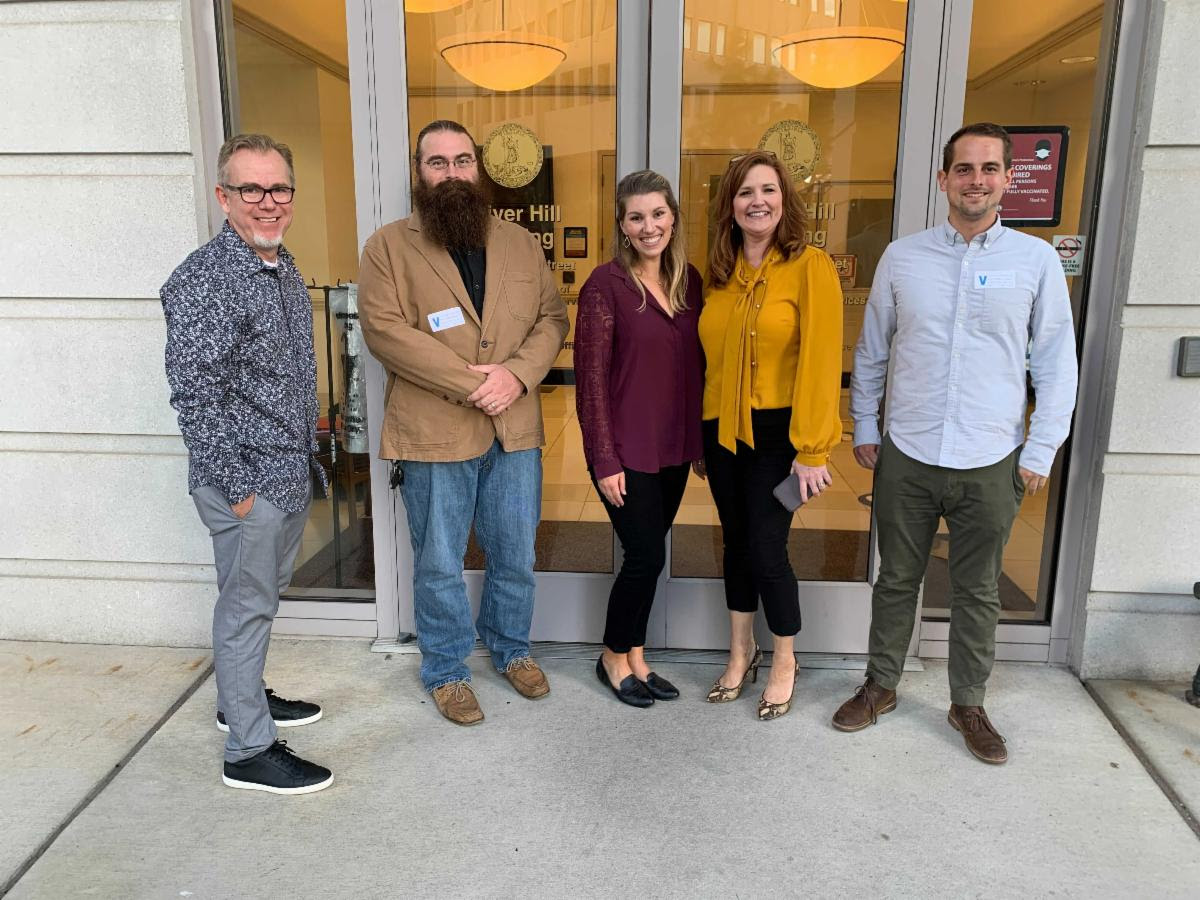It’s ON A BOAT!

The price of disposable rubber gloves that cooks use at the Texas Inn were $60 per case in 2019. During the COVID-19 pandemic, the price tripled to $180 per case. I get it. Supply and demand. A global pandemic tends to increase demand for PPE. Yet, the price of rubber gloves remains at record highs, despite demand decreasing. Why? 70% of everything we import into the United States comes by boat.
Currently there are 81 ships off the coast of California, between Los Angeles and Long Beach, anchored or drifting, as they wait to be offloaded. On Monday that number was 62. On a normal day, there would be three or four. I am praying that one of those ships is carrying a few containers of latex rubber gloves from Malaysia that will eventually be shipped to my restaurants in Lynchburg, Virginia. Without gloves, we can’t cook. Without food, we can’t stay open.
Malaysia accounts for 60% of global nitrile glove production and 75% of medical gloves used in the world. And all of those gloves get here by boat. If you’ve got something your company needs and it’s coming into the Port of Savannah expect a 60-day delay. If it’s coming to Charleston Harbor you might be waiting up to four months.
Of course, you might be lucky to get your merchandise at all. Globally it is estimated that 789 containers fall off ships each year. In 2020 that number increased to 3,000 and 2021 is on pace to more than double. Backlogs in the supply chain are forcing cargo ships to stack their cargo higher on deck, leading to more accidents in rough seas and high winds.
If your container finally gets into the U.S., there may not be enough longshoremen around to offload it and there might be additional delays getting a trucking company to ship it. The labor shortage is affecting every business, not just Burger King.
So in the short term, we all just have to be more patient. Every business is experiencing supply chain issues, but communicating with your customers is key to managing their expectations. Use your internal and external communications channels to communicate regularly with your customers. Successful companies will survive this supply chain SNAFU by emailing their customers, blogging about challenges (and solutions), and keeping in touch with customers through regular updates on their social media and web channels.
This problem may outlive the current pandemic and you’re likely to see barren shelves at your local Walmart for months to come. It may take six months to a year for the global supply chain to unkink itself. You have to be patient and so do your customers — and open, honest communication is your best tool in situations like this.
MONDAY:
Happy Birthday Day to Us!
On Monday, we had our kickoff meeting with our newest On Monday, the Texas Inn turned 86 years old. Thanks to hard work from Jr. Communications Specialist Kennedy Heidel and Account Coordinator Bailey Broughton, we took over Central Virginia’s airwaves, with a nice news piece on WSLS, five live remotes on WDBJ7’s morning news, and an interview with Fox affiliate WFXR. It was a frenzy of TV and talk show radio interviews all day, while also helping my stores sell 86-cent hotdogs in celebration. I think the T-Room looks pretty good for her age.
The team also celebrated Sr. Graphic Designer Erin Rebmann’s birthday on Monday. Erin took a much-deserved day off and spent it with her family and friends. Happy Birthday, Erin! #29


TUESDAY:
Client Visits
On Tuesday, the team hit the road for a CORE session with the lovely folks behind the Virginia’s Finest and Virginia Grown brands at the Virginia Department of Agriculture and Consumer Services. The teams met and got down to business about the core of their brand. It was a huge success and we’ll be presenting our brand communications findings and recommendations to them soon.
Also on Tuesday, Senior Art Director Carissa Ghaffari was on-site for a Maola Milk photoshoot. Yes, there were real dairy cows and Carissa had a blast working with their team to snap pictures for their social channels and new advertising campaign. Carissa was even nice enough to take off her muck boots before walking back into the office. Thank moo very much.


WEDNESDAY:
Un-Fore-Getable
On Wednesday, I learned that our newest addition to the Communications Team was featured in Richmond BizSense. It feels as though Junior Copywriter Caitlin Sherman has always been a Madison+Main-iac and we’re very lucky to have her.
Although the weather was less than ideal, our Accounts team met for their monthly lunch at Top Golf on Wednesday. They hit golf balls, ate snacks, and had a glorious time seeing each other in person instead of on Zoom. I wasn’t invited. I think it has something to do with the fact that I once hit a golf ball at a 90-degree angle.

THURSDAY:
Thats the Spirit!
On Thursday, I finally got my hands on a copy of Spirited Virginia Magazine, where our client A. Smith Bowman Distillery was featured on the cover. The entire issue is about cooking with spirits, and although I usually like to drink my bourbon as opposed to cooking with it, some of the liquor-kissed foods looked scrumptious.

FRIDAY:
Ready for a Weekend of Events
This morning, I hit the airwaves on Richmond’s Morning News with John Reid again, counting down my pics for top events for the weekend. John was as gracious a host as always and I am looking forward to continuing these segments throughout the fall.
The team celebrated Jr. Graphic Designer Alex “Smiley” Osepchuk’s birthday today! Alex is currently working remotely from Baltimore, so we all assume she spent her Birthday Day off eating blue crabs and slugging back ice cold Natty Bohs. However, it is more likely that she consumed an extra-large Cookie Oreo ice cream bowl from B-More Licks. Happy Birthday, Alex! Your smile is contagious and everyone at work caught it.

A FEW OF OUR FAVORITE EVENTS
Perkinson Center for the Arts & Education Performances
Chesterfield, VA
New Performances Weekly!
Check out a plethora of performances at Chesterfield’s Premier Center for the Arts & Education — including a new gallery show! Tickets can be bought online.
Got an upcoming event you want to share? Can we come? Send us the deets!
“One moment of patience may ward off great disaster. One moment of impatience may ruin a whole life.”— Chinese Proverb